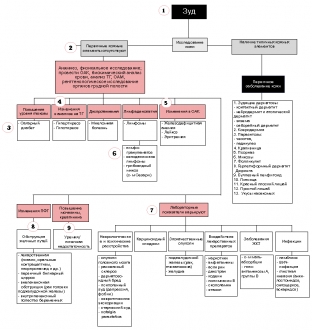Diagnosis of pruritus is an important and difficult task, as the appearance of pruritus signals the possible development of a serious internal disease. To establish the exact cause and for the treatment of pruritus, it is necessary to carefully collect an anamnesis. It is worth asking the patient about such information - the localization of itching, the time of appearance and intensification of intensity, provoking factors, intensity and course. How can knowing the characteristics of pruritus help the diagnostic process? What is important to know about itching in order to identify the exact cause?
How does knowing the time of itch onset affect the treatment of itch?
The intensity of itching is a subjective sign, for a correct assessment it is necessary to ask if the itching interferes with the process of falling asleep and sleeping in general. Itching of the skin that interferes with sleep and daily work, from which a person often wakes up, is regarded as severe.
The time of occurrence of itching during the day allows you to distinguish between daytime, nighttime, seasonal and permanent itching. This is quite important, because on the basis of this characteristic, it is sometimes possible to immediately make a preliminary diagnosis and begin treatment of itchy skin. So, nighttime itching is characteristic of scabies and common eczema. The activity of the scabies mite increases in the evening, when it begins to move actively and cause itching. This is a characteristic symptom of itching in scabies. Itching of the anus in the presence of pinworms appears at night, between two and three hours. Psychoneurosis is accompanied by constant itching.

Treatment of pruritus starts with proper diagnosis
Any patient who complains of itching of the skin should be tested for dermatozoonoses after a thorough history has been taken. In cases where itching of the skin cannot be associated with dermatoses, another cause is sought. The examination includes a complete blood and urine test, a biochemical blood test, a stool test for occult blood and worm eggs, a chest x-ray and a thyroid hormone test.
The secondary stage of diagnosis includes ultrasound, endoscopic, radiological and histological methods of examination. After the diagnosis is established, the treatment of pruritus begins.
What medications are used to treat itchy skin?
The most effective treatment for pruritus is the treatment of the disease that causes itching. If it is impossible to cure the underlying disease and eliminate the cause of itching, symptomatic therapy is prescribed. It allows the patient to forget about itching for a while.
Common symptomatic treatments for pruritus:
- sedatives;
- antihistamines;
- hyposensitizing drugs (sodium thiosulfate and calcium preparations);
- mast cell membrane stabilizers (ketotifen);
- salicylates;
- sequestrants;
- enterosorbents.
Treatment of pruritus should be complex
Physiotherapeutic methods are also effective in the treatment of skin itching: inductothermy of the adrenal glands, electrosleep, sulfuric and radon baths, contrast showers, sea bathing. Great importance is given to local symptomatic therapy of pruritus, despite its short-term effect. Preparations exist in the form of powders, ointments, pastes and mixtures. Corticosteroid ointments, anestezin, diphenhydramine solution, phenol, water with table vinegar, lemon juice and chamomile infusion have antipruritic action.
In the complex symptomatic treatment of pruritus, it is recommended to eliminate irritating factors - dry skin from frequent washing, rubbing clothes, & nbsp; the use of certain products and temperature changes in the environment.
Diagnosis and treatment of pruritus is a rather urgent problem due to the difficulties of these processes.







Add a comment